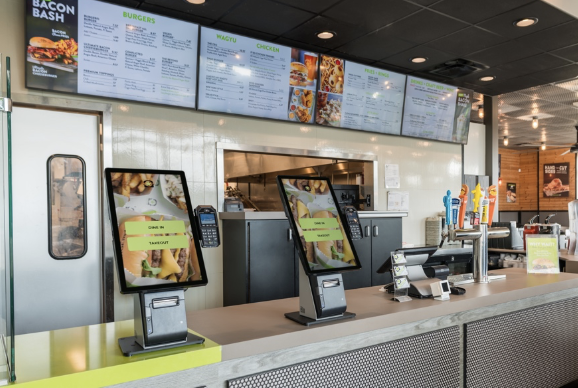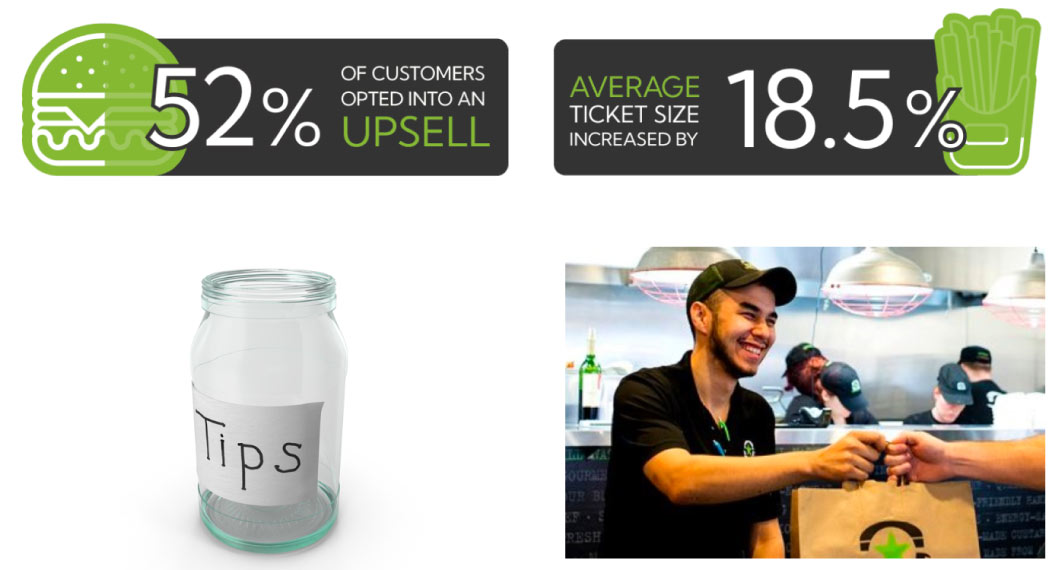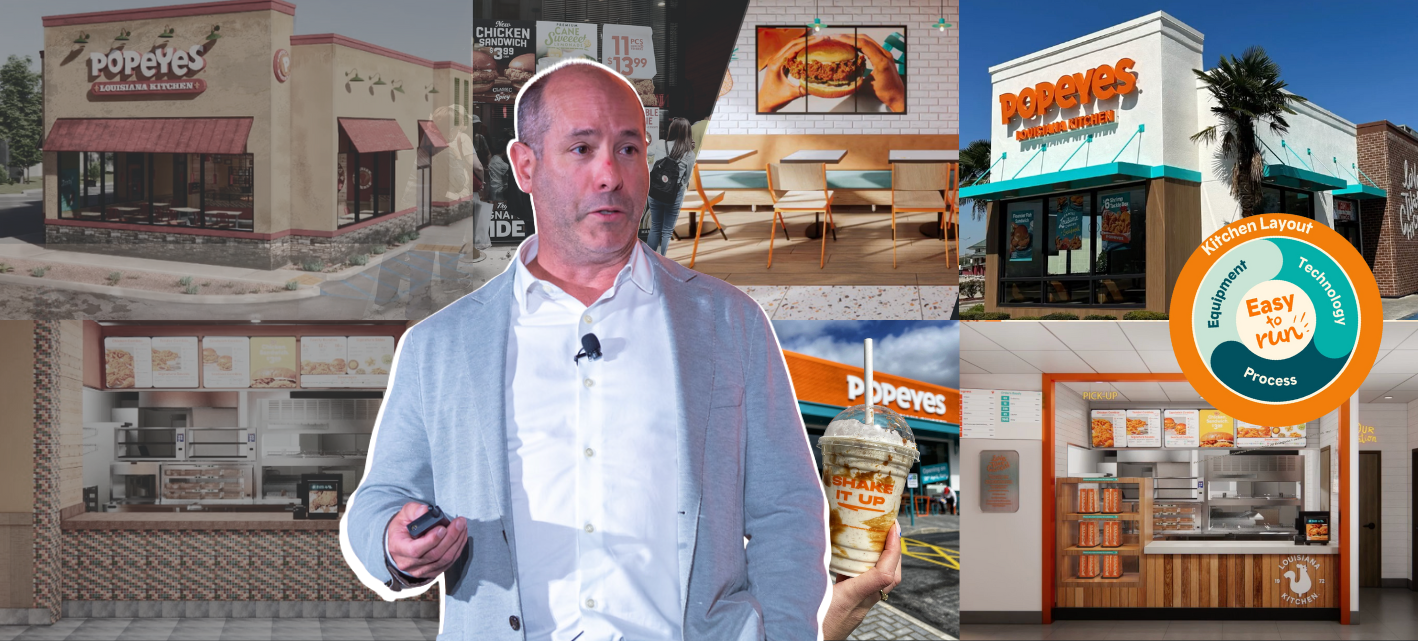When Karl Goodhew attempted to roll out kiosks at Macy’s in his previous role as Director of Software Engineering with the 100-year-old retailer, he ran into many roadblocks.
“It was the hardest project I’ve had to deal with in terms of getting internal buy-in,” Goodhew explained during a presentation at RestaurantSpaces. “We even had unions trying to stop us from rolling out self-checkout.”
The Macy’s project was challenging for several different reasons. A typical Macy’s is around 200,000 square feet, has anywhere between 12 and 16 exits, and more registers than in a grocery store, scattered across the floorplan. Also complicating self-checkout implementation were the vast array of products, tricky returns policies, not to mention having customers remove security tags from items at point-of-sale.
Despite these challenges, above all else, the biggest hurdle to adopting self-checkout was the stigma surrounding the technology.
“As a technologist, it’s all about meeting the customer however they want to be met and letting them buy however they want to buy. So it was a foreign concept to me that there would be groups of associates that did not at least want to try it.”
Goodhew also mentioned it’s not just internal friction that complicates the process, but also public perception. Frequent negative headlines about kiosks, he said, “sets a tone that’s very hard to overcome.”
The Journey Toward Buy-In
One of the biggest misconceptions around self-checkout, Goodhew explained, is that kiosks take jobs.
It was an issue he came up against soon after stepping into the role of Chief Technology Officer at premium burger chain, BurgerFi in 2021. Another primary sticking point was that the kiosks would erode customer service.
“The main concern was that we would lose the hospitality element. We didn’t want to lose that human touch,” Goodhew said. “So we decided upfront, we weren’t going to eliminate jobs.”
Getting buy-in, Goodhew stressed, relies on approaching kiosk technology as a tool to enhance the customer experience and increase productivity.
At BurgerFi, placing two kiosks out in front of the counter changed the relationship between customers and those employees ordinarily operating a POS system.

“We moved that cashier from behind the register — behind that wall, where they’re just asking ‘Do you want fries with that?’” Goodhew explained. Doing so, he said, allowed staff to greet customers, walk them through any LTOs on offer, and overall, have a different conversation with guests.
“We moved that hospitality [element] to in front of the wall and made that job more of a value add to the business,” Goodhew said. “Operations were totally on board with that.”
At locations where kiosks were trialed, no jobs were cut. Moreover, self-checkout terminals allowed BurgerFi to keep certain restaurants open that may not have been able to operate due to a shortage of staff. Another benefit the chain noticed is that guest usage of kiosks freed up store managers to take breaks and focus on other tasks, like table touches.
“We did not see a systematic breakdown in society when we introduced kiosks into our stores,” Goodhew quipped.
Addressing Employee Concerns
Pushback isn’t just a challenge at an organizational level. Helping employees understand the benefits of and intention behind self-checkout is equally important.
Goodhew recalled an example at one BurgerFi location where a store manager had placed an out-of-order sign on a kiosk. When questioned, the manager replied he was concerned that team members were losing out on tips due to customers ordering for themselves.
“I had the opportunity to inform the manager that the kiosks were earning a greater percentage of tips on sales than his staff were,” Goodhew said. “This machine is adding to the tip pool and not taking out of it. That was a big realization for the manager.”

Relying on Data, Not Emotion
One of the biggest considerations IT professionals need to consider when adopting the tech, Goodhew explained, is relying on real data to demonstrate its efficacy.
“We agreed upfront that we were gonna use data to measure success. We would not use emotion,” he said. “We would not say ‘We feel like it’s working.’ We set benchmarks and that was what we used to decide if we would roll out past pilot or not”
In order to track results, BurgerFi focused on metrics like upsells, average ticket size, employee and customer satisfaction, and tips collected. They also worked to ensure that reporting worked effectively, using a third-party tool called Mirus to collect data.
And how have kiosks performed for BurgerFi? During the trial period, 40 percent of in-restaurant orders came through the machines. In some cases, it was greater than 75 percent, while in others, it was as low as 30. Overall, the chain saw an 18.5 percent increase in raw check average, 8.4 percent when adjusted for discounts. More than half of the tickets included an upsell of some kind.
The hardware has enterprise menu management and is fully integrated with a location’s POS system, allowing for different pricing points across BurgerFi’s network of franchisees. Loyalty integration enables customers to scan a QR code and pay. There are also tap-to-pay capabilities.
“It’s something all of the leaders in the company got behind once we saw the results of the pilot. We all aligned and said that this is good for the company.”
Kiosks have now been rolled out at all corporate BurgerFi locations and are also available to franchises, if they want them.
Testing and Cross-Collaboration
BurgerFi tested five different layouts before settling on a “shotgun approach,” placing the kiosks just in front of the counter. Goodhew recommended that other chains adopt a similar process of trial and error.
“If you go down this journey, it’s very easy to test. It’s just an ethernet cable and a power cord. That’s something that I highly recommend that you do.”
Most importantly, Goodhew pointed out; success greatly depends on cross-collaboration between departments.
“This was not an IT project. I made sure of that. We got operations in the room, we had marketing in the room, finance, and IT, and we all sat there and said, how will we measure this? What does success mean, and how do we want to do it?”

Posted by
Chain Restaurants Reimagined.
The Retreat to Reimagine Restaurant Development, Design + Technology.
April 12-14, 2026 | Miami, FL





-3.png)
-4.png)
-3.png)



Comments